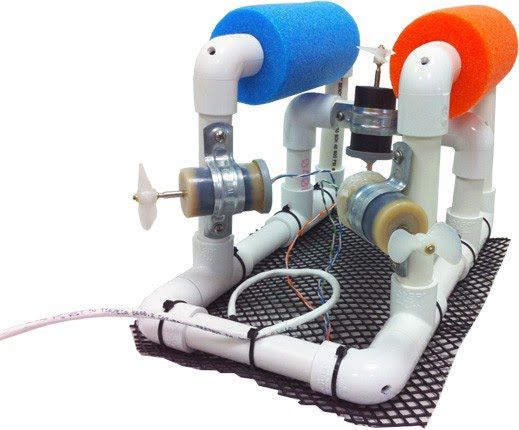Article
I. Trident Underwater Drone – This drone is one of the most popular ROV’s on the market today, and for good reason. It has an impressive depth rating of 328 feet, which means it can be used in most bodies of water without issue. The Trident can reach speeds up to three knots (or roughly four miles per hour), making it a great choice for both recreational and commercial users.
The most appealing factor about it however is the price, costing just $1695 which, let’s face it, is about the same financial ballpark as a DJI Mavic drone. The HD camera is able to record 1080p footage at 30 fps. Furthermore, the camera is optimized for low light conditions and offers a dynamic range as well as a wide FOV.
Users can operate the marine drone via the Cockpit app with the dedicated JXD s192k all-in-one controller or simply by using an Android smartphone. In addition, some of the control features include an advanced autopilot, and the drone can hold its level.

II. SeaPerch ROV – The SeaPerch ROV is a DIY kit that is perfect for those who are interested in learning about how ROV’s work. It has an impressive depth rating of 65 feet, and can be assembled in as little as an hour. The SeaPerch is a great choice for those who are just starting out in the world of ROV’s, and it can be used for both recreational and educational purposes. And who wouldn’t want to have a go before committing to something bigger?

III. Aquabotix HydroView – The HydroView is one of the most versatile ROV’s on the market today. It has an impressive depth rating of 330 feet, and can be used for a variety of purposes such as inspection, research, and even entertainment. The HydroView is also one of the most affordable ROV’s on the market, making it a great choice for those who are looking to get started with their own maritime projects.
With live video feed and the ability to capture HD imagery up to 75 feet below the surface, this looks like it could shape up to be a firm favourite, and judging by the look of it, a lot of fun too!

IV. Phantom® T-Series – The Phantom® T-Series is suitable for rapid deployment, boasting a high-performance ROV system that provides more power and versatility compared to other vehicles in its class. Its polypropylene chassis is resilient, non-corroding, and maintenance free. The Phantom® T5’s design of its four vectored horizontal and one vertical Tecnadyne® thrusters provides significant control and propulsion in current, with abundant propulsive force to maneouvre aggressively in all directions.
The T-Series can be customized with three, four, or five total thrusters dependent upon the application. With a depth rating of 1000 feet and speeds up to two knots, the Phantom® T-Series is perfect for those who need a durable and high-performance ROV system.
With these specifications and design in mind, we can see how the Phantom can be used in all manner of aptitudes, weathering even the harshest environments.

V. Saildrone – The Saildrone is a unique ROV that is powered by wind and sun. This makes it an ideal choice for those who are looking for an environmentally-friendly option, and can be used for a variety of purposes such as inspection, research, and even entertainment. It is also one of the most affordable ROV’s on the market, making it a great choice for those who are looking for an entry-level device.
The maritime security variants of the vehicle also include an advanced acoustic and camera system that, combined with the proprietary onboard machine learning algorithm, is capable of capturing mapping data of the ocean floor up to 7000 metres!

With these options and surely many more to follow, we can’t wait to see what new ventures this technology can bring, especially given how vibrant and varied the drone industry already is!
Liarne Fox
February 14